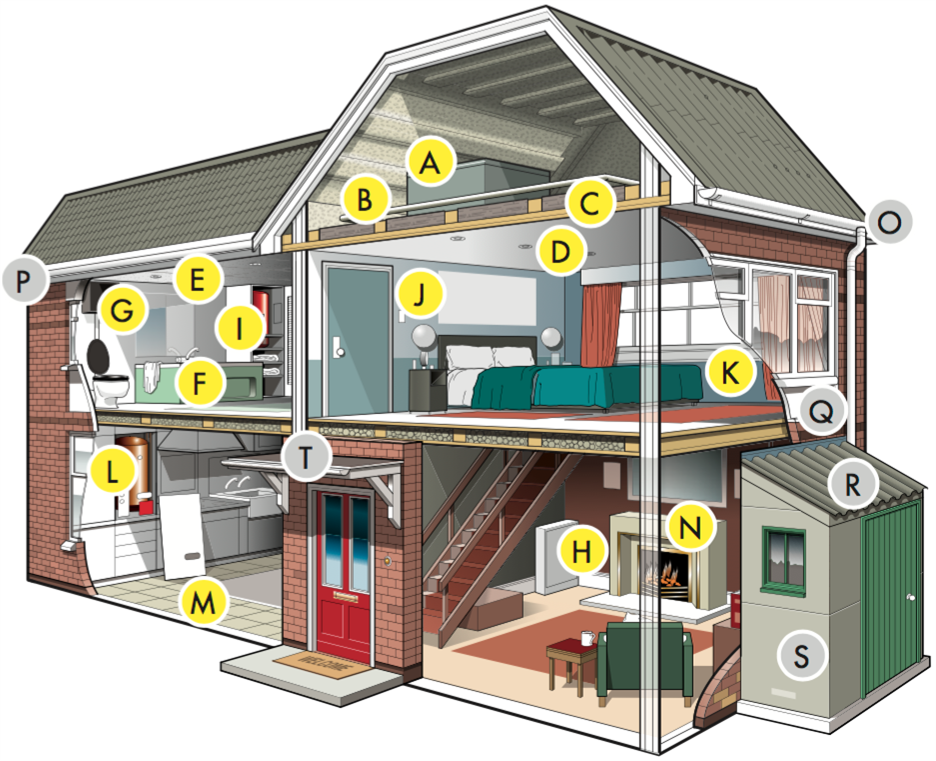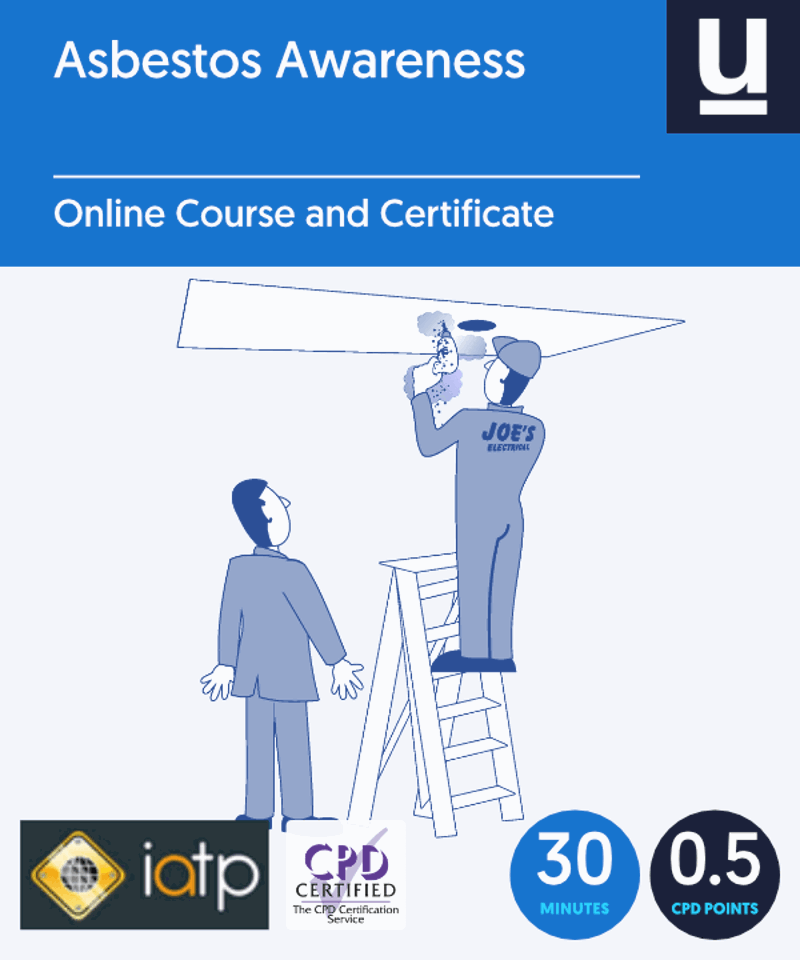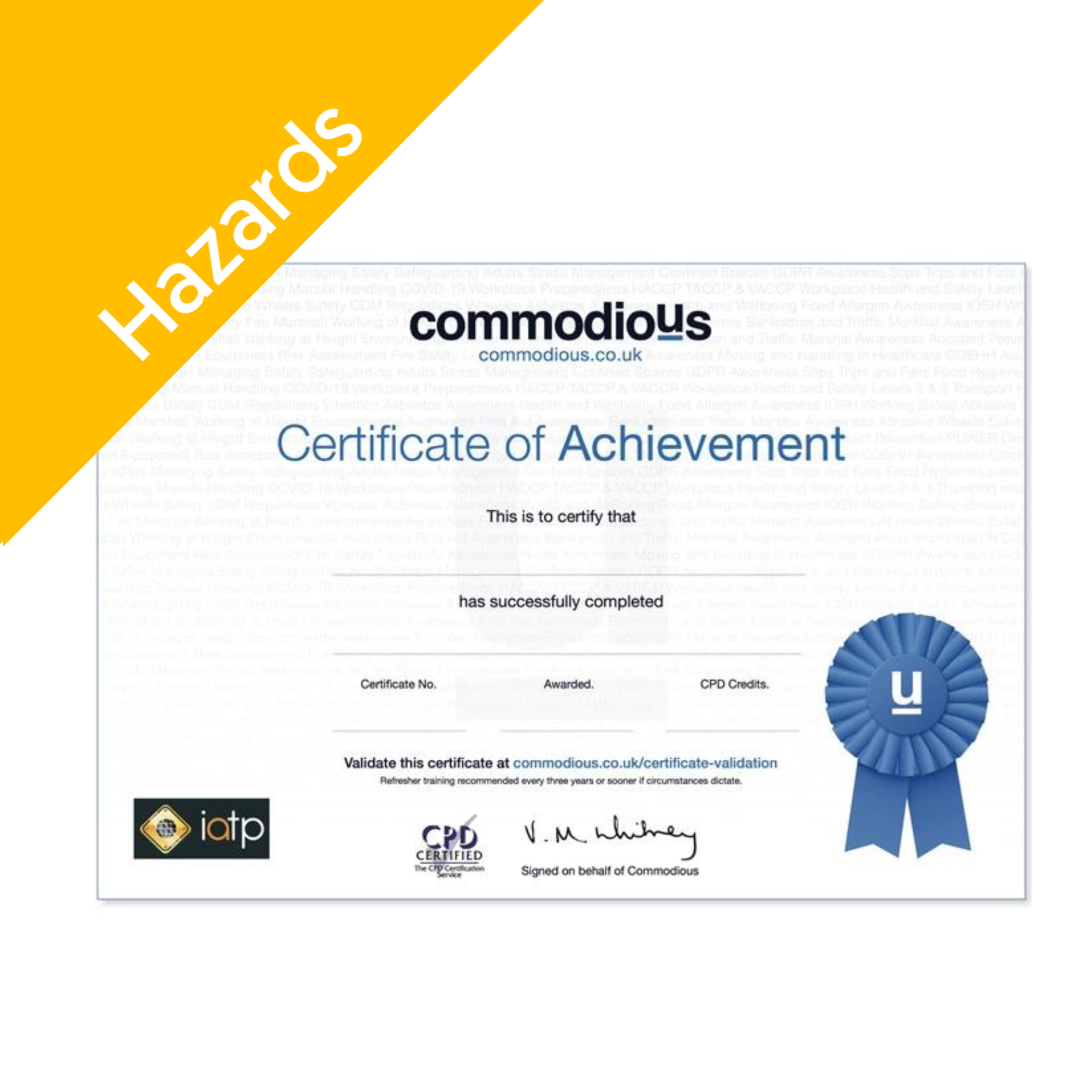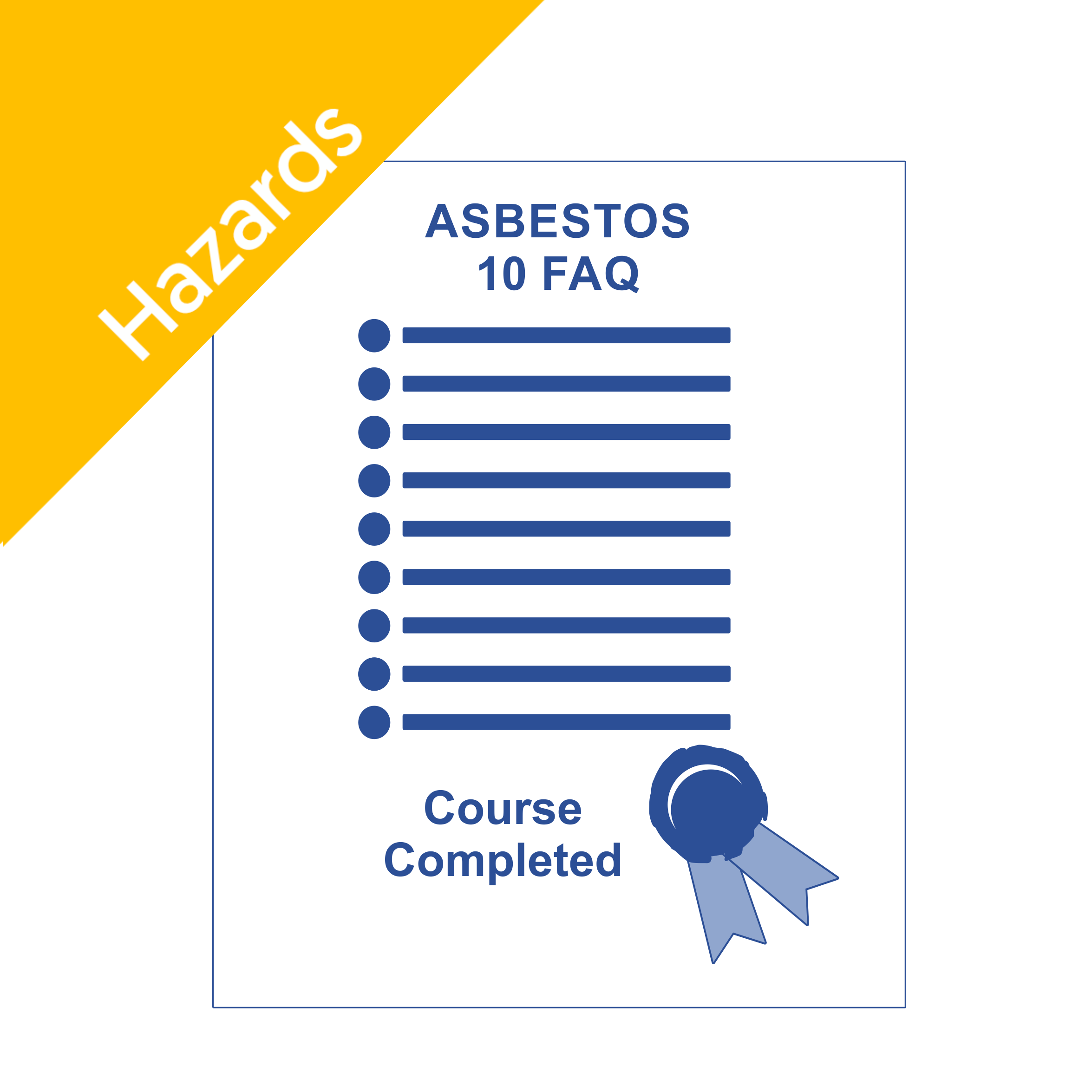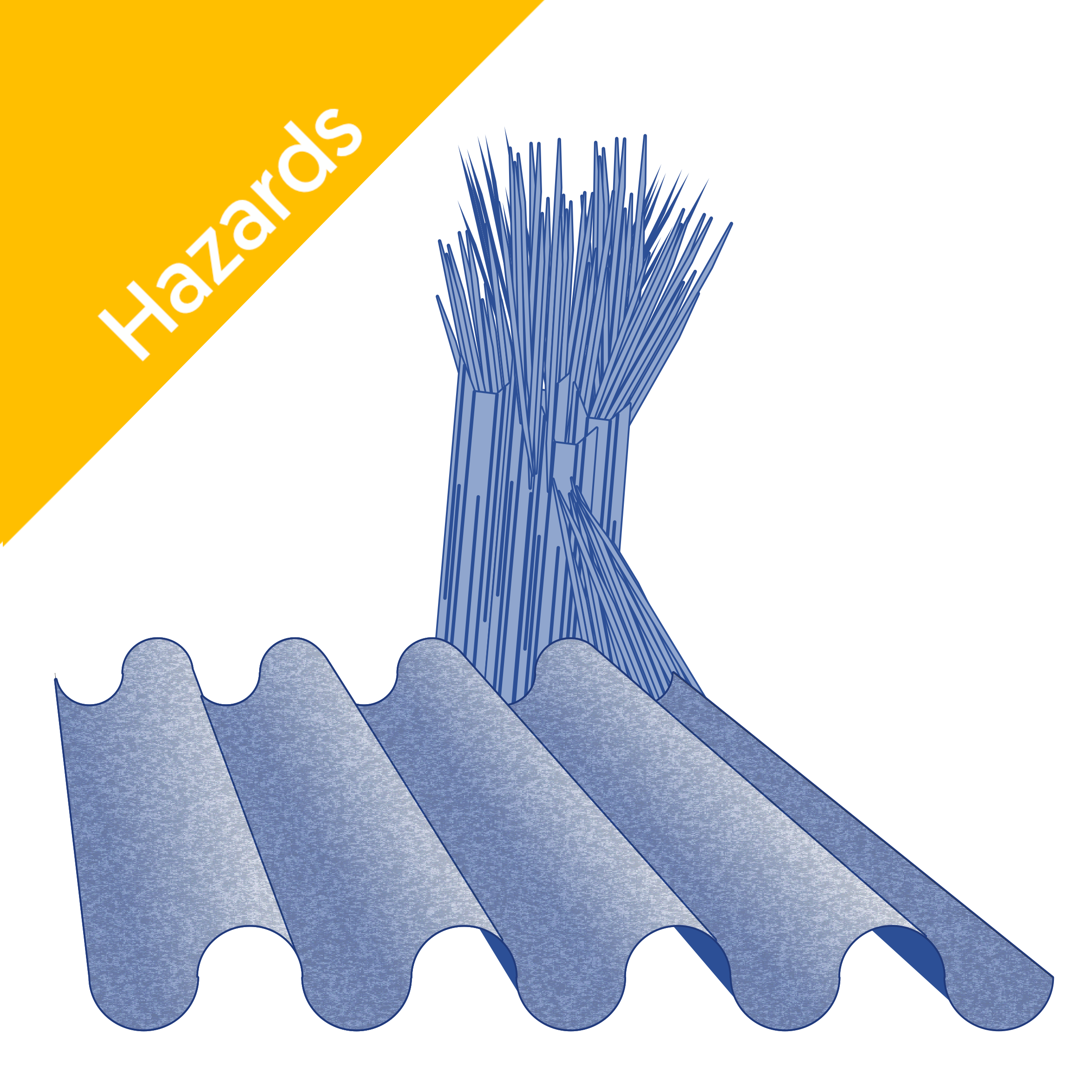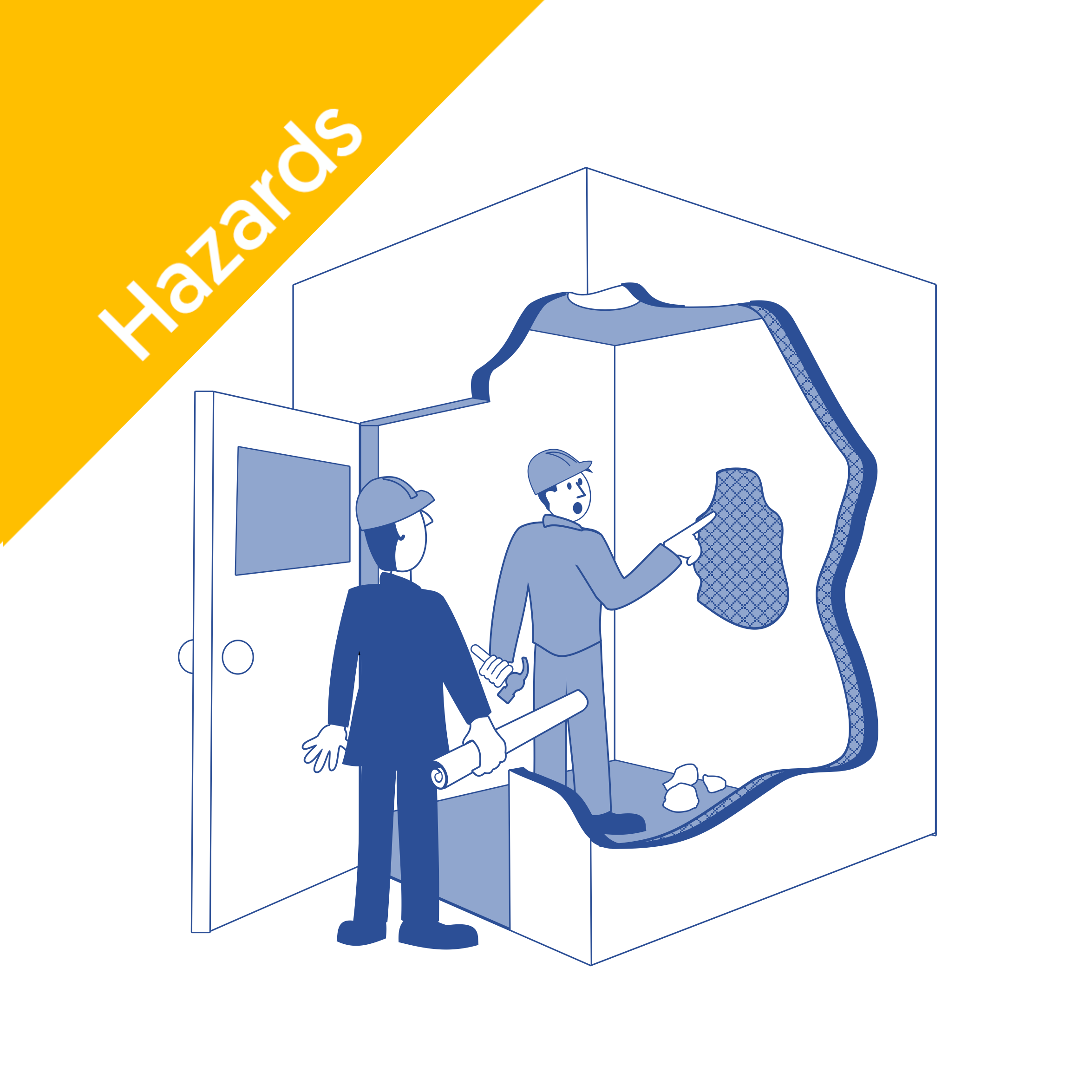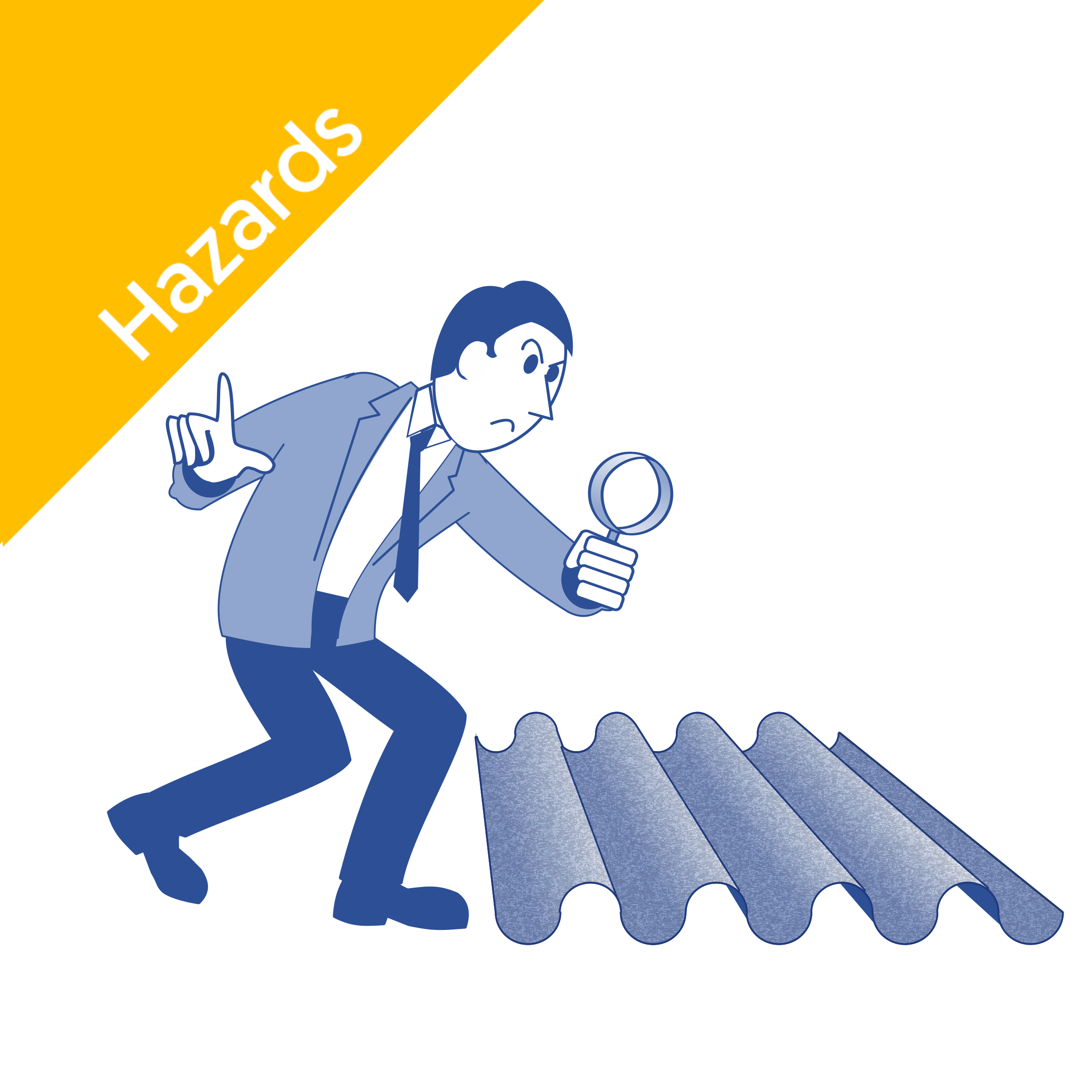In this article, you will discover how to identify asbestos in your home, what to do if you find it, and when to arrange for a trained professional to get involved.
The information provided in this article is based on the UK's Health and Safety Executive's guidance and may not be accurate or suitable for countries outside the UK.
You can find more information on the HSE's website.
Why Is Asbestos So Dangerous?
Asbestos is a collective term for numerous naturally occurring fibrous minerals commonly added to building materials because of their strength, heat resistance, and durability.
Exposure to asbestos fibres is linked to deadly health issues, such as lung cancer, mesothelioma, and asbestosis. Asbestos accounts for the most work-related deaths in the UK, so knowing what to look out for and what action to take should you find it is essential.
Products containing asbestos are referred to as Asbestos Containing Materials, or ACMs for short. Asbestos-containing materials include insulation, floor and ceiling tiles and roofing materials manufactured before 1999.
How to Identify Asbestos and Where Can You Find It?
Asbestos itself is odourless and difficult to detect visually; however, it is possible to identify asbestos-containing materials.
Below is an is an infographic detailing the location and type of asbestos-containing materials most found in domestic premises.
![Infographic detailing locations of asbestos in a house Infographic detailing locations of asbestos in a house]()
If you are concerned that the property you are occupying might contain asbestos, you should take the following steps:
- Consider the age of the building. If it was built after 2000, it will not contain asbestos. Properties built before 2000, however, may have asbestos-containing products.
- Visually inspect the asbestos-containing material (ACM) for damage. Asbestos materials are not deemed dangerous by the Health and Safety Executive (HSE) unless their fibres are emitted due to damage or disruption. As a result, you should visually inspect ACMs regularly, checking for physical damage such as abrasions, tears, and water damage.
What to Do if You Discover Asbestos
Asbestos has the potential to incur fatal harm and is still prevalent in many buildings. Identifying it and safely dealing with asbestos-containing materials is crucial.
If you come across an asbestos-containing item, you should immediately stop what you're doing and avoid handling or disturbing it.
If you are sure (or have a strong suspicion) that your home includes asbestos materials, it is frequently safest to leave these alone, especially if they are in good shape and unlikely to be damaged. You should visually inspect the materials regularly to ensure that they have not been damaged or begun to deteriorate.
If there is no damage to the material, you may not need to take any action. However, if you suspect the asbestos-containing material is damaged, contact a licensed contractor for advice.
Remember that every attempt to repair or remove asbestos raises the risk of potentially lethal fibre exposure. Using a professional with the proper training and experience is the safest action.
I May Have Been Exposed to Asbestos Accidentally. What Should I Do Next?
Individuals who fear they have been exposed to asbestos are understandably worried about the implications on their health.
Although the type of asbestos and the time of exposure may be known, there may be little credible information available on the level of exposure. The more fibres generated by an asbestos-containing substance and the longer the activity with the material lasts, the larger the cumulative exposure to asbestos fibres and, consequently, an increased risk of adverse health effects.
Some asbestos-containing products emit more fibres than others. Unintended, short-term asbestos contact, which results in limited fibre exposure, has little chance of causing long-term adverse health effects.
If you are concerned about probable asbestos exposure, see your doctor and request that a notation be made in your record about possible exposure, including the date, kind of asbestos, and any potential exposure levels (if known). Your doctor may sometimes refer you to a respiratory medicine specialist. Asbestos-related lung damage takes years to develop and shows up on chest X-rays. X-ray studies cannot determine whether asbestos fibres were inhaled.
I Recently Purchased a Home - Is It Possible That It Contains Asbestos?
Asbestos may exist in any residential structure constructed or renovated before 2000. Asbestos is still commonly found in the following:
- Asbestos cement goods (pipes, flues, and roofs, for example)
- Lagging (on pipes and boilers, for instance)
- Toilet cisterns and water tanks
- Asbestos insulating board (also known as AIB – it closely resembles typical plasterboard)
- Textured decorative coatings and sprayed coatings on ceilings, walls, and beams/columns
- Loose asbestos in ceiling and wall cavities (commonly referred to as Artex)
- Textiles
- Composites
- Floor tiles
Is There Any Asbestos Legislation for Homeowners
Asbestos health and safety legislation is aimed at work situations. However, due to the deadly nature of asbestos, the guidance is detailed, and the practices and principles can typically be applied to domestic cases as a best practice.
If you have employed tradespeople to improve or maintain your property, you are not legally liable for asbestos dangers to any contractors at your home. The tradesperson carries out a contracted activity and is legally responsible for a safe working environment.
However, you should notify them of asbestos materials in your home before they begin work. This communication reduces the likelihood of any ACMs being disturbed. HSE highly recommends that ACMs be repaired or removed by trained professionals.
Can I Work Where There Is Asbestos?
If you want to do some DIY or property maintenance, you may wonder if working around potential asbestos-containing materials is safe. You can complete some work without the need for a license. For a list of licensable and non-licensed work, visit https://www.hse.gov.uk/asbestos/licensing/licensed-contractor.htm.
Keep in mind that any attempt to repair or remove asbestos increases the risk of possibly lethal fibre exposure, so hiring a professional with the necessary training and experience is the best option.
Can I Test for Asbestos?
Homeowners may want to only tackle this with specialist help. Anyone suspecting asbestos is present can contact a professional for an asbestos survey. However, according to the HSE, sampling asbestos materials requires no licence. Given the risks, you may want to hire a UKAS-accredited (United Kingdom Accreditation Service) asbestos-testing laboratory to collect samples and conduct the analysis.
How Much Does Asbestos Testing Cost
The cost of a professional asbestos survey varies depending on the property's size, the situation's complexity, and the surveyor's rates.
Some companies offer asbestos consultancy and surveying services, often at what appears to be a low price. However, before commissioning such work to an organisation, you may wish to evaluate the risks. For example, is the surveyor technically competent and adhering to HSE codes of conduct? Are the surveyors UKAS accredited? Are there precautions, such as liability insurance, in place in the event of a problem?
Notably, you will incur additional fees if an asbestos survey identifies maintenance or removal work that must be completed.
Can You Remove Asbestos Yourself?
No. The risks involved in removing ACMs are too high for the work to be completed by anyone not adequately trained.
If the asbestos-containing material is in bad condition, an asbestos specialist may recommend that you arrange for its removal. In this instance, you must seek the services of an accredited asbestos contractor.
All asbestos removal operations must be done following the Control of Asbestos Regulation (2012). It should only be done by a licenced contractor who must produce a detailed documented plan of the removal process. Contact the Health and Safety Executive or the Asbestos Removal Contractors Association for a list of contractors with the necessary certification.
There are some alternatives to removal. Asbestos removal is not always the safest option. If the damage is minor, an expert may offer repair options. These are known as Asbestos Encapsulation and Asbestos Enclosing.
What Is Asbestos Encapsulation?
Encapsulation (sealing) of asbestos is a less invasive procedure that involves placing a protective covering over the afflicted area, such as elastomeric paint, plasterboard, or fabric. This action reduces the chance of disrupting asbestos and prevents fibres from being released into the air.
What Is Asbestos Enclosing?
Enclosing means covering the asbestos-containing materials to prevent fibre escape. Insulated pipes, for example, could be covered in a jacket.
Encapsulation and enclosing are sometimes preferable to removal since they are less expensive and do not necessitate material disposal.
But, you should consult a professional to conduct a risk assessment and establish which procedure is best for you.
Can I Sell Something with Suspected Asbestos?
No. It is prohibited to supply any asbestos-containing item, whether for a fee or for free.
In Conclusion
Asbestos has the potential to incur fatal harm and is still prevalent in many buildings. Detecting it and dealing with it safely is vital.
Commodious offers health and safety courses, including the IATP-accredited Asbestos Awareness certificate. Click here to learn more about this training or if you require an asbestos awareness certificate.

